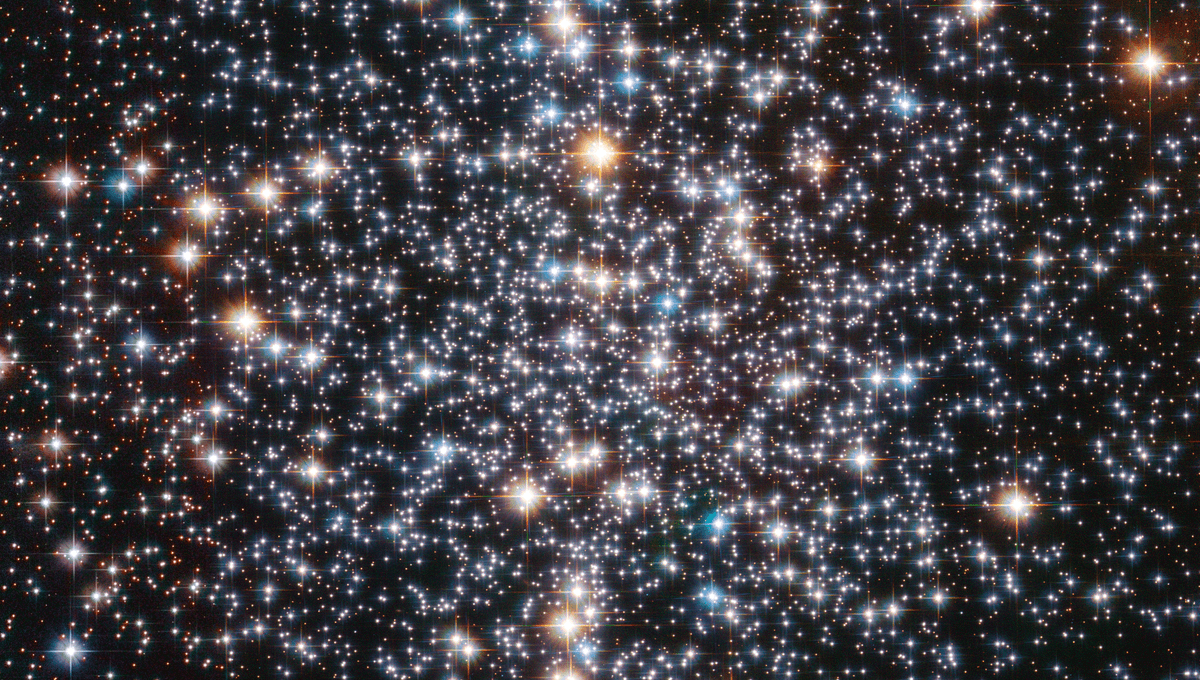
Researchers report the peculiar motion of stars at the center of globular cluster M4, which is located 7,200 light-years away light-years from Earth. Researchers believe that the best explanation for the way the stars orbit is a black hole weighing about 800 times the mass of our Sun. A peculiar object in an extremely rare class of black holes.
Most black holes we are familiar with come in two classes. They can be stellar-sized, between a handful and 100 solar masses. They form from stars going supernova, or because other stellar-sized black holes or neutron stars end up merging (and we can spot their gravitational waves). On the other end of the mass spectrum, there are supermassive black holes, which range from hundreds of thousands of times the mass of our sun to millions if not billions of times as heavy as our nearest star. These reside at the center of almost every galaxy.
And then there are objects in between, the intermediate-mass black holes. They have been very difficult to find. Only a handful of candidate objects are known to have the right mass. Globular clusters have been a particular target for this kind of search. Often they possess a “dark mass” at their center – objects that are heavy but not bright enough to be seen or distinguished.
This doesn’t mean an intermediate-mass black hole for sure. Several dead stars or star-sized black holes can often explain the dark mass. But for M4, it’s not as simple. There is just too much mass in much too small a space. If there were black holes or stars concentrated in a region less than one-tenth of a light year, they’d either merge or kick each other out in a game of stellar billiards. The most likely scenario is an intermediate-mass black hole.
“We have good confidence that we have a very tiny region with a lot of concentrated mass. It’s about three times smaller than the densest dark mass that we had found before in other globular clusters,” lead author Eduardo Vitral from the Space Telescope Science Institute, said in a statement.
“The region is more compact than what we can reproduce with numerical simulations when we take into account a collection of black holes, neutron stars, and white dwarfs segregated at the cluster’s center. They are not able to form such a compact concentration of mass.”
M4 is the closest globular cluster to us, making this, if confirmed, the closest intermediate-mass black hole to Earth and one of the closest known black holes to our planet. The work required years of the most exquisite observations, made possible by the Hubble Space Telescope and the European Space Agency’s Gaia observatory. Gaia found the two closest black holes to Earth just a couple of months ago.
“While we cannot completely affirm that it is a central point of gravity, we can show that it is very small. It’s too tiny for us to be able to explain other than it being a single black hole. Alternatively, there might be a stellar mechanism we simply don’t know about, at least within current physics,” Vitral cautioned.
The study is published in the Monthly Notices of the Royal Astronomical Society.
Source Link: We May Have Just Found The Closest Of The Most Elusive Type Of Black Hole